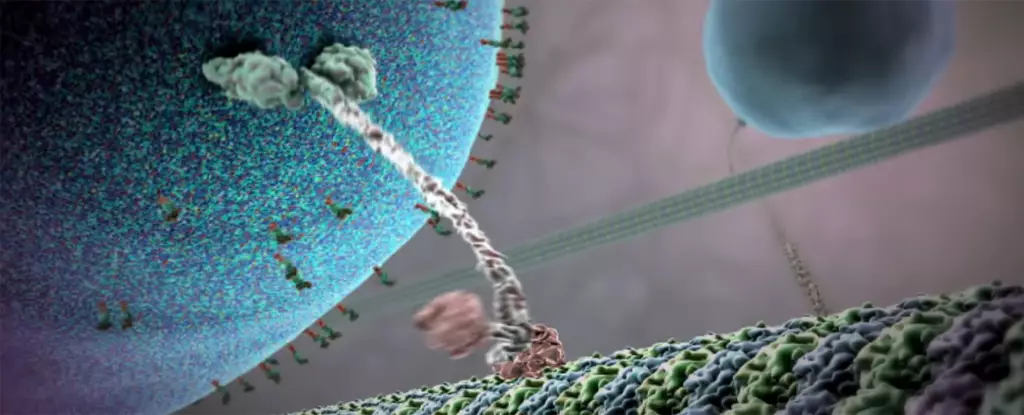One of the most shared ‘science’ posts on the internet is a gif of a protein molecule walking along a filament while carrying a large sphere on its shoulders. The animation has been trending online since at least 2014 and continues to receive attention whenever it is shared again. Many have speculated that the gif represents happiness itself, specifically myosin transporting endorphins in the brain. While the gif is fascinating to watch, it has no scientific merit in portraying happiness.
The Real Story of the Gif
The original video’s creator, medical artist, and animator John Liebler explained the real story behind the gif in 2014. Liebler and the team at XVIVO created the 3D computer animation in 2006 for a biology classroom video called “The Inner Life of the Cell” in collaboration with two Harvard University researchers, Robert Lue and Alain Viel. The educational video wasn’t intended to depict a brain process; instead, it was designed to take the viewer “on a journey through the microscopic world of a cell, illustrating mechanisms that allow a white blood cell to sense its surroundings and respond to an external stimulus.”
The viral gif is based on one part of the video and shows a kinesin protein ‘dragging’ a pouch called a vesicle along a microtubule. Kinesins are motor proteins that lug various cargo about, and microtubules are the internal structural supports of our cells. The kinesin motor protein was a real scene stealer in Inner Life, although it wasn’t even in the original treatment for the short.
The Role of Kinesins in Cells
In the brain, kinesins are involved in the transport of neurotransmitters and other chemicals within neurons. But in any cell, kinesins are the packhorses of proteins, doing much the same job with different cargo packaged up into bulging vesicles. A kinesin protein’s ‘strutting’ step is about 8 nanometers long, while a myosin protein’s ‘stiff-legged’ steps are 74 nanometers in length, as captured by scientists in 2015.
The motions of muscles, as well as much smaller intracellular cargoes, are driven by molecular motors that move unidirectionally along protein polymers (actin or microtubules). The opportunity to study and compare numerous kinesin and myosin motors provides a valuable resource for understanding the mechanism of motility.
Depicting Happiness
While the viral gif may not accurately depict happiness, it can still bring joy to many who view it. Happiness is more complicated than myosin delivering endorphins to our brains. Dopamine plays a part, along with other neurotransmitters like serotonin, norepinephrine, and endorphins, and more broadly, biological health and genetics.
The original purpose of the gif was to educate viewers on the microscopic world of a cell and the mechanisms that allow a white blood cell to sense its surroundings and respond to an external stimulus. The viral gif does an excellent job of showing how cell transport works in general terms and the role of kinesins in protein transportation.
The viral protein walking gif is not an accurate depiction of happiness and has no scientific merit in portraying such. However, the gif is still fascinating to watch and can bring joy to many who view it. Understanding the role of kinesins in cells and protein transportation is essential for understanding the mechanism of motility.


Leave a Reply